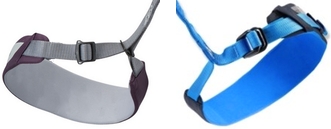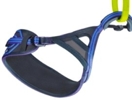Collecting every piece of gear takes a little time.
We think it's worth the wait.
Nice choice!
Give us a moment to collect those options for you.


Search by model name only, and spelling counts. Protip: Type slowly and wait for the auto-complete.
If you’ve already used other filters, this search bar will not override them.
Retired gear and unfilterable gear (missing key specs like price/weight) will not appear with this search.


It can be frustrating to find a piece of gear that you like, and then have no buying options. This filter aims to ease that problem. In the future we plan to add non-US retailers to this list and possibly call out each retailer directly.
We feel a little weird calling out Amazon separately as we're not huge fans of this mega-corp. We do this because we're partners with Amazon in multiple countries, so if somebody from the US, Canada, or UK clicks an Amazon link, it'll go to their country-specific Amazon page (when possible). At the moment, this is the only way to find non-US buying options on the site.


In grams, the weight, as stated by the manufacturer/brand.
If there are differences in weight (due to multiple sizes or optional accessories) we note those in the individual product page.
This filter searches through the middle-most size, often this is size M.


The full retail price in US dollars as stated by the brand/manufacturer/US distributer.
With non-US products, we have statically converted the price to US dollars.
This static conversion also means it's possible that there will be some misleading figures at times. The original price and currency will be noted on the individual product pages.


If the harness is specifically stated for men.
If the harness is specifically stated for women (usually the difference is a taller rise connected to larger leg loops).
If the manufacturer states it's unisex or does not list a gender, we use unisex. Unisex is predominantly men's shapes/sizing.
Full body harnesses made and certified for climbing. We don't list harnesses certified for professional Work at Height use.
If the manufacturer says it's a kids harness. Full body harnesses listed separately.


This filter really only helps if you're on the higher or lower end of the size range because most companies have standard S-L sizing.
This filters the size as stated by the brand AND according to our own size guide, shown below:
XXS: < 21.75” / <55 cm
XS: 22 - 28" / 56 - 71 cm
S: 26.5 - 31.5" / 67 - 79 cm
M: 30 - 35" / 76 - 89 cm
L: 33 - 38” / 84 - 97 cm
XL: 36 - 41.7” / 91 - 106 cm
XXL: 39 - 46” / 99 - 117 cm
XXXL: 45”+ / 114 cm+
We created this guide because there was very little consistency in the higher and lower ranges of sizing.
Additionally, for each harness, when you click into the details, we do our best to show the official Brand's size guide to help find the best fit.
We wrote a whole blog post about sizing including how/why we created our own size guide, if you want to dive into the details.



Few harnesses produced today (other than big wall harnesses) are offered with a manual doubleback buckle. This is the traditional buckle style that does not automatically lock and requires the waist strap to be thread back through the harness. The buckle is one flat piece of metal.

The majority of harnesses today have quick adjust buckles because it's faster and often safer. These buckles already include the "doubleback" safety measure; they loosens by lifting the metal piece and tightens by pulling the strap.
You can tell if it's a Quick Adjust when the buckle is made of two pieces of metal and the webbing gets squished/stopped between them. Each company has their own proprietary name to describe the auto-adjustment like "Speed buckle."

Found on lightweight mountaineering harnesses and full body harnesses. Much more common on leg loops, this is a plastic buckle that clips together.
Rare for a waist belt, this is found on lightweight mountaineering harnesses and some other unique harnesses.



Few harnesses produced today (other than big wall harnesses) have a traditional manual doubleback buckle (one flat piece of metal). This style does not automatically lock and requires each leg strap to be threaded back through the buckle.

Lots of climbers choose quick adjust leg buckles because they're faster and easier to adjust than manual buckles and they have more adjustability than fixed leg loops. This is particularly helpful if you have one harness for all seasons (wearing different layers of clothes).
Each company has their own proprietary buckle name and look like "Speed Buckle." It's also referred to as auto-adjust or pre-threaded buckle.

Found on the majority of lightweight mountaineering harnesses this is a plastic buckle that clips. This is the fastest adjustment for taking a harness on/off, especially when hooked into crampons or skis.

Many climbers choose fixed leg loops where there is a stretchy material (instead of a buckle) that can expand to accommodate the leg. Although fixed leg loops are generally more comfortable, they require a more specific fit and often have smaller size ranges.
Some harnesses have a quick adjust buckle that also includes a stretch component for comfort--these are still found under Quick Adjust. Example:



Gear loops are used to hold gear (quickdraws, cams, etc) onto your harness. 4 gear loops is most common.

Most often on full body harnesses or guide/gym style harnesses, for climbers who don't need to hold much gear.
Mostly found on lighter harnesses made for [ski] mountaineering or high-end sport climbing where every gram matters.
The standard/most common number for climbing harnesses. Perfect for sport and trad climbing.
Designed for long multi-pitch and big wall climbing, found on harnesses designed to hold the maximum amount of gear.
Occasionally, the number of gear loops will change on a harness model depending on the size. There could be 7 gear loops for the med/large but only 5 gear loops for the xsmall/small. In this case we list the highest number for the filters, and then write an explanation on the product page like, “Size S/XS can only fit 5 gear loops.”



This is the loop that you belay/rappel from. The vast majority of harnesses have one.

Reasons climbers want two loops:
Note: The second loop will often be able to "nest" inside the first loop.

This will look like a semi-circle loop at the top of the harness or two semi-circle loops that are side by side. A tie-in is most common for these harness types:


bluesign® APPROVED: Is when a product uses material(s) that are certified to use non-toxic chemicals and processes during manufacturing. There are strict standards for resource use, occupational health and safety, water and air emissions, and consumer safety.
bluesign® PRODUCT: Must contain at least 90% bluesign® APPROVED materials. Why not 100%? Because metals and plastics are not certified and most textile products have zippers or buckles.
Read more about Bluesign in this blogpost
RECCO®: This is a type of reflective chip that allows you to be searchable by rescue professionals worldwide, when they're searching with a RECCO® detector.


Because color can be a differentiator.
Note: If you choose a color and the picture does not seem to match, this usually means it's also available in another color and we just don't have capabilities to show you that color on this page. If you click into the product you'll be able to see more product photos (hopefully!) of the color you're looking for.


The list of manufacturers and brands that we have all the technical specs for.
If a brand is missing from this list, scroll to the bottom of this page to see all the unfilterable gear we track, and ideally it'll be there.
If you don't see the brand you're looking for in the unfilterable products area, definitely send us a note so we can look into it further.
We do our very best to find and display every technical spec for every piece of climbing gear in the world. But sometimes we just can’t dig up a spec or two (usually it's the official price and weight). Sadly, this means not every product is available for filtering and sorting :(
If we allowed products that are missing key specs to display in the results above, these incomplete products would need to appear no matter what filters you chose. This would make the filtered results cluttered and misleading. So instead of leaving out these incomplete products entirely, we're listing them below: